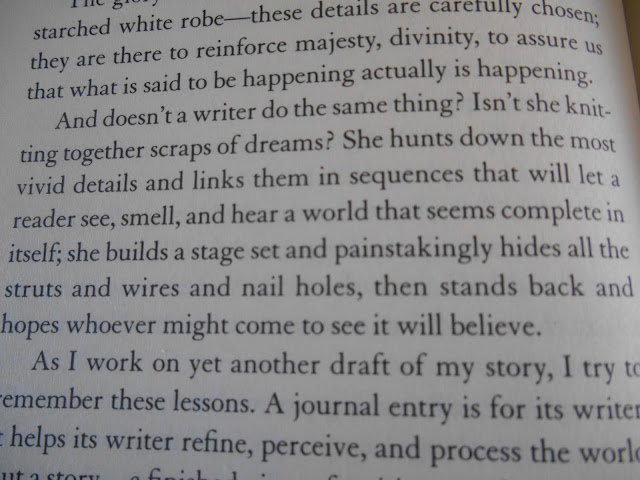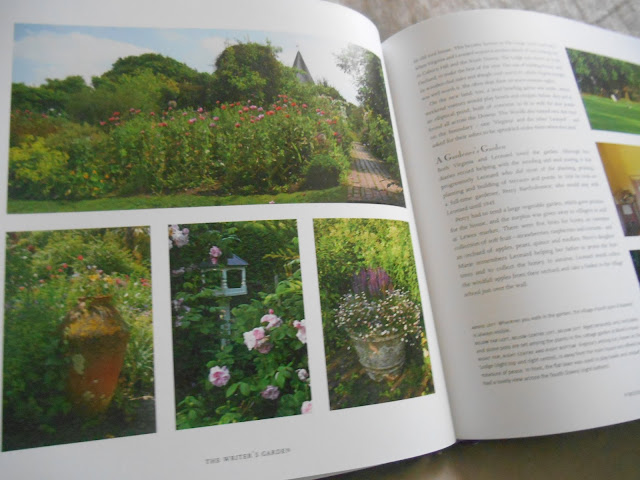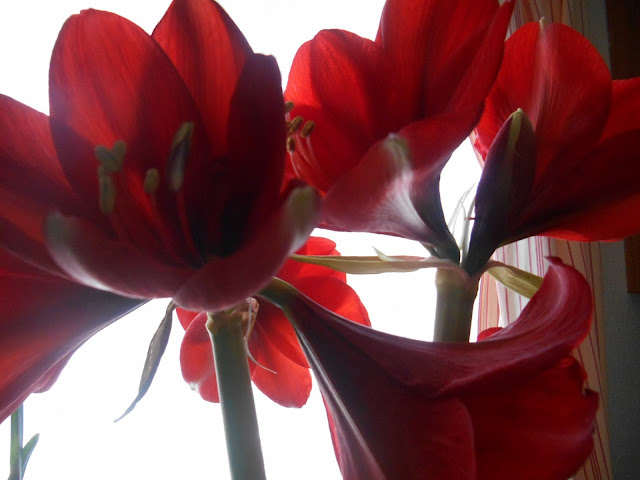#ONE

On our library website, if the book I want isn't on their book list, I can request a purchase! My library savvy daughter suggested this - she works in a library, and one of her tasks is book purchaser. Of course, the books are reviewed, but so far, the three I requested have been purchased - and that puts me as number one on the hold list for when it arrives.
Habitat: A Field Guide to Decorating, is a new book recommended on several of the blogs I read. As a design book, it is full of photos, heavy duty paper, and gorgeous design, which all come with a big price tag. Perfect for my first request through the library. It came through this month, and I am delighted. Lauren Liess is a designer, and she does a beautiful job of suggesting and guiding and directing without making me feel like a less-than-smart-homemaker. With four young children herself, she knows a bit about messes and practical solutions.

She writes it as a field guide, with definitions, based on her favorite book and pastime as she grew up - a nature field guide she carried around with her everywhere, making notes, learning about plants and developing a growing love of nature. This love of nature is incorporated into every room; bringing the outside in is her favorite theme.
Now, if I had just known this little library trick back when Marie Kondo's book,
The Magic of Tidying Up, came out, I wouldn't have been #80 (or whatever number I was,don't remember exactly), when I finally got around to putting a hold on it. I'm down to #7 now, looking forward to reading it soon.
#TWO
My method: How To Organize, 101. Empty out the drawer or shelf or surface. Don't leave the things you know you will put back anyway, or the plant on the island, or the favorite shirt. Empty it all out. All of it. Empty. I am not repeating this because I think you didn't hear me, but because I have to repeat it to myself when I am attempting to organize. Pull it all out. Move it to a different place. On the bed, where it has to be cleared off before bedtime. On the table, where it will have to be cleared before dinner. Somewhere where you have to take steps, to see the stuff in a completely different context. Then, put back only what you really, really want to keep and will use.
I suppose I did know all this already, but this month, I re-learned it. Mostly, with our kitchen island, but I did several drawers this way, too. Since before Thanksgiving, I've had a few plants on the end of the island, and for some reason I cannot explain, since then, there have been piles of stuff. Random stuff, piled on the island. This month, I moved the plants, found places for everything else, and the island is again, empty. If I'm cooking, yes, there is a cookbook and measuring spoons and bowls and splatters. But when I'm done, it is amazingly easy to wipe it all down, and have it all cleared off again. Love it that way. I have space. Even if the rest of the counters are, let's say, busy with stuff, I have the relief of the island space. For me, it has to be extreme to make it work.
Now, if I could just do this consistently, through the whole house...
#THREE
A new cast iron fry pan gives me new recipes and techniques to learn. For the most part, successful. One recipe was yummy, but the cooking time given was way too long. I burned a section along the side. You're not supposed to soak cast iron, it could rust, so I was afraid to try my usual technique of soaking damp baking soda on the spot overnight. I scrubbed and rubbed. Still stuck-on spots. I put a big blob of coconut oil on the spots, and let it sit overnight. In the morning, the mess wiped right off. Yay!
#FOUR
A book I received for Christmas inspired my reading list for 2016.
A Writer's Garden, How gardens inspired our best loved authors, by Jackie Bennett, has a chapter for twenty different authors, like Beatrix Potter, Agatha Christie, Charles Dickens, Winston Churchill, Roald Dahl, Virginia Woolf, Jane Austen. They are described in their gardens, with anecdotes from the time they lived there, gorgeous photos, lists of the books they wrote while living at that location, and how those books were influenced by where they lived and gardened. Photos of their studios, or sometimes garden sheds are inspiring. The paths they walked daily, their favorite plants, or the guests they entertained there, give you a glimpse into their private inspirations.
I have already read some of their classic books, but my plan is to read at least one book from each of the authors. Next up,
Pygmalion, by George Bernard Shaw, the play that became My Fair Lady. Then, something by Agatha Christie. I just finished
The Lake House, by Kate Morton. I'm generally not a mystery fan, but have really enjoyed Kate Morton's mysteries. Have not ever read Agatha Christie, but it seemed a good choice since I'm on a mystery theme. Any recommendations for one of her mysteries?
A book about writers, their books, and their gardens, a perfect topic for me.
#FIVE
One of our daughters sent me this:
"Knowledge is knowing a tomato is a fruit.
Wisdom is not putting it in a fruit salad.
Philosophy is wondering if that means ketchup is a smoothie."
I am already ready for spring. Put in a large order for seeds: flowers and vegetables. This month, I want to build a cold frame and set up my grow lights in the basement to start some seedlings come March. Or maybe in February, if I can't wait, maybe on February's extra day. My hoop cover is keeping chard, spinach, kale, carrots and beets snug, even though it was 12 degrees last night and snow is piled around.
My inside blooms - eight buds on one amaryllis bulb. Winter consolation.
Audrey Hepburn said, "To plant a garden is to believe in tomorrow."
#SIX
One more thing I learned this month:
Bill Keane, the Family Circus author and illustrator said,
"If you are afraid to make a mistake, you won't make anything."
In two areas, I am applying this. My writing for here, on this blog, and my garden writing, for the local newspaper and the Master Gardener newsletters. It is too easy for me to do nothing, to be afraid of a mistake, to not want to put anything "out there," because I am afraid. So, here's to making things, (create, my one-word for 2016), even if what I make is a mistake.
This list linked with Emily Freeman,
Chatting at the Sky. There you can read what other writers learned in January.






























